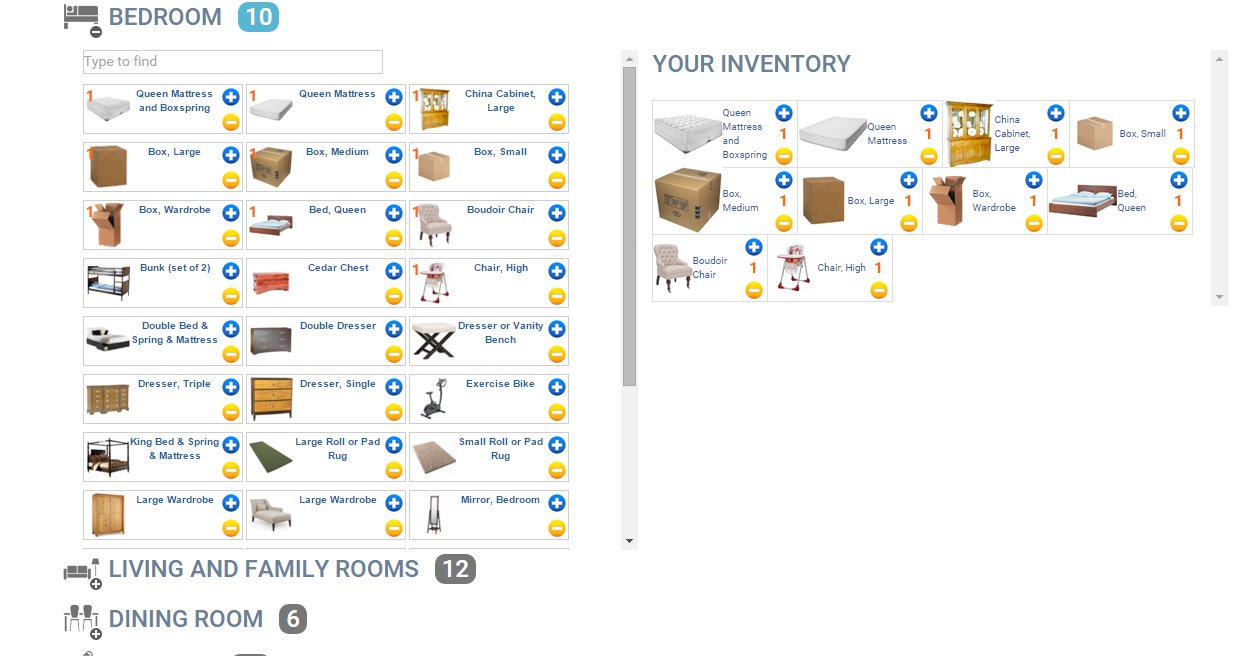How to Move a Couch
Smart Strategies to Keep You & Your Couch Safe

- Do I Bring It or Toss It?
- Still Undecidecided About Your Trusty Couch?
- The Final Decision
- How Do I Protect My Couch When Moving?
- Disassembling the Couch
- Wrapping a Couch for Moving
- What Kind of Supplies & Tools Are Necessary for a Successful Move?
1. Do I Bring It or Toss It?
Many people may find it hard to say goodbye to their beloved couch when it is time to move to a new home. You will probably not stop until you find a way to bring your old and trusted friend to your new home with you. While there are a few challenges to moving a sofa to a new home, it can be done by DIY or with help from some professionals.There are many different styles and shapes of sofas. It doesn’t really matter what kind you own, because they are all pretty much the same to transport, with the exception of larger sofas that can be taken apart. It may seem daunting to move a couch at first, given all of the challenges and things that could go wrong, especially if you're planning on moving cross country. Moving Authority is here to help you move one of your most valued home possessions without trouble. This article will cover the possible errors that could come up when moving a sofa, as well as how to get around these issues. Moving your sofa should not only be about its safety but about yours as well. While we understand how tempting it might be to move a sofa the easy way, we also know that the easiest way is rarely the safest.2. Still Undecided About Your Trusty Couch?
When they move, many people come to realize that they own a lot more items than they thought they did. It is okay to see this now because it isn’t too late to rectify the situation. Moving with more items than what is actually needed is never a good idea. Depending on the length of your move, you may be charged by weight, and the more your shipment weighs, the more you will have to pay. Since you are already moving everything out of your house, a move is a good time to declutter your living situation. You should only keep the items you really want and need. Get rid of everything else by either donating it, selling it or just trashing it.
3. The Final Decision
If you aren’t sure of what to get rid of, you can make an inventory of all the items in your home. This way, you can see how much stuff you have before everything is loaded into boxes. You can do this right on using Moving Authorities' moving cost estimate. Usually, and if you aren’t stubborn or sentimental, the things that are not worth keeping will be obvious. Although, there will be decisions that are more complicated, such as whether or not you should move your sofa.
If you cannot make the decision to keep or toss your sofa, then you should ask yourself a few questions. First, how valuable is the sofa? If the couch is a designer, a gift from someone, antique, or an heirloom, then you should hold on to it. Next, you should ask yourself if its current condition still classifies it as useable. If it is worn out, then you are better off just buying a new one.
4. How Do I Protect My Couch When Moving?
If you have come to the conclusion that it would be worth it to move your couch, then you should begin to think about how you will move it safely. Preparing your sofa for transport will keep it safe for the duration of the move.
5. Disassembling the Couch
You can take off detachable parts of the couch to make it easier to move. Removing any loose components will also prevent them from getting lost or damaged during the move. If you can, you should remove legs of a couch to prevent them from scratching walls and door frames during transit. Most often, sofa legs are just screwed to the rest of the couch, so simply unscrewing them will be enough to take them off. If there are any other removable parts, such as cushions, armrests, and cup holders, they should also be taken off. You want your
6. Wrapping a Couch for Moving
After all removable parts have been taken off, it is time for you to wrap the couch for moving. Use packing paper or bubble wrap to cover anything you have removed from the sofa. Place these wrapped items in a box and label it. If there are still parts of the couch that stick off, cover these items with bubble wrap to protect them as well. When securing the bubble wrap to the sofa, remember not to put tape on cloth surfaces.
- If the couch is a recliner, then make sure the piece doesn’t open while moving by tying it with rope. You can also use a furniture strap to secure it.
- If your couch is worth money, such as an antique, then you must take extra caution when you are moving it. This also applies if you bought the couch new and it was expensive. You can ensure that the sofa is not damaged by wrapping it with a protective layer of shrink wrap. This will protect it from dirt, water, and help protect it from scratches by acting as a protective cover.
- In order to protect the corners of the couch, you can use pieces of cardboard secured with moving tape. The corners are more likely to be damaged during the move because they stick out. The cardboard will take the impact of dents and accidental hits, instead of the sofa. This can easily be found in while you're moving since you have plenty of cardboard from all of the boxes you're using.
- Moving pads act as one of the best protectors against damage to a sofa when it is in transit. You can wrap a few moving pads around the sofa and secure them with moving tape for another level of protection against damage. You can rent or buy furniture pads from your moving company if you are using one, or you can use bedding blankets, although they will offer less protection and will be very spoiled after the move is over with.
7. What Kind of Supplies & Tools Are Necessary for a Successful Move?
As soon as the couch is ready to be moved, you will have to acquire some special equipment to move it safely and without damage. You should always have the proper tools when attempting to move a sofa by yourself. And, when we say by yourself, we mean that the preparations for moving the sofa will be done alone. The actual moving, of course, will be done with the help of other people or even a professional moving company to prevent injury. Interesting enough, you can actually hire professionals to help move furniture around in your house, generally called a furniture move.- You will need furniture sliders to move your sofa without lifting it off the floor. Sliders are essentially just thick plastic pieces with hardened rubber to prevent too much friction between the furniture and the floor. You place one slider under each of the sofa’s legs, then push toward the door.
- You will also need a furniture dolly. You can rent one to make your move much easier and safer. They sit pretty low to the ground and look like squares with four wheels. They make the task of pushing your sofa around infinitely easier. You can ask local moving companies if they rent these dollies out
- Lastly, you will need to look for some kind of furniture strap. These can be used to make your body into a sort of tow truck, as they allow you to pull the furniture with the part of your body that has more muscles.
8. Finding the Best Furniture Movers For You!
Want to know the easiest and safest way to move a couch? Hire a professional mover. They are the most prepared to move a couch, and that way there is no risk of damaging your precious furniture.
If you are using a full service moving company for your home move, then you don’t have to worry about preparing or moving the sofa. Full-service movers will move it with the rest of your furniture. The best way to find a good furniture mover is through Moving Authority.


Add Comment